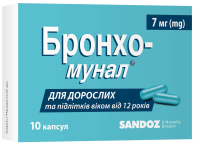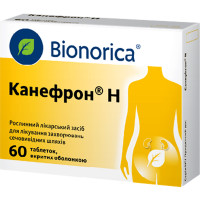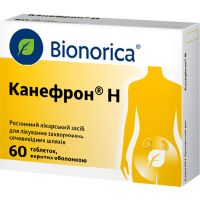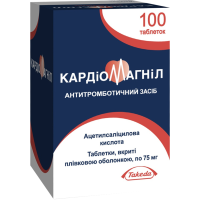GENERAL CHARACTERISTICS
Antifungal agents for use in dermatology. Antifungal agents for local administration. Bifonazole. ATC code D01A C10.
Indications to Use:
Treatment of fungal skin diseases caused by bifonazole-sensitive pathogens (dermatophytes; yeast, mold fungi and other fungal infections; Malassezia furfur and Corynebacterium minutissimum):
• superficial candidiasis and skin mycoses (including mycoses of feet and webs of fingers, arm mycosis, mycosis of smooth skin and skin folds of the body)
• versicolor tinea;
• erythrasmas.
Health & Beauty
| Bath & Body (1) | Dietary Supplements, Nutrition (1) | Hair Care & Styling (3) |
| Health Care (399) | Natural & Alternative Remedies (344) | Oral Care (2) |
| Skin Care (1) |
-
Pharmacological properties Pharmacodynamics. Bisacodyl causes a laxative effect, which is manifested by softening or liquefaction of feces. The mechanism of laxative action is due to an increase in the penetration of water into the intestinal cavity and a decrease in its absorption, as well as an acceleration of intestinal peristalsis. An important place in the mechanism of action is occupied by the breakdown of bisacodyl in the alkaline contents of the intestine, which leads to the formation of substances that irritate the receptors of the intestinal mucosa. This leads to stimulation of intestinal peristalsis. Pharmacokinetics. Intestinal and bacterial enzymes rapidly convert bisacodyl into its active metabolite. Only 5% of the oral dose is absorbed into the systemic bloodstream, transformed in the liver and excreted in the urine and bile in the form of an inactive metabolite (glucuronides).$13
-
GENERAL CHARACTERISTICS Selective β-adrenoceptor blockers. ATC code С07А В07. Indications to Use: Arterial hypertension ischemic heart disease (angina) chronic heart failure with systolic dysfunction of the left ventricle in combination with ACE inhibitors, diuretics, if necessary – with cardiac glycosides.$11
-
Blepharo-gel No. 1 with hyaluronic acid and sulfur Demolan Forte. The gel contains hyaluronic acid, which is known for its ability to moisturize the skin. This helps to avoid dryness and irritation on the edges of the eyelids. It gently cleanses the area around the eyes from dirt, grease and makeup residue, ensuring cleanliness and gently caring for the skin.$18
-
Blepharo-gel No. 2 with hyaluronic acid and peptides Demolan Forte. The gel contains hyaluronic acid, which is known for its ability to moisturize the skin. This helps to avoid dryness and irritation on the edges of the eyelids. It gently cleanses the area around the eyes from dirt, grease and makeup residue, ensuring cleanliness and gently caring for the skin.$19
-
Bromhexine 4, 60 ml Used by adults and children since two years for the treatment of diseases of the respiratory tract, accompanied by cough with expectoration of viscous sputum: bronchitis, bronchitis of different etiology, obstructive bronchitis, bronchiectasis, bronchial asthma, pulmonary tuberculosis, pneumonia (acute and chronic), cystic fibrosis, emphysema.$14
-
Pharmacodynamics. Bromhexine is a synthetic derivative of the active substance of plant origin, vasicine. It has a secretolytic and secretomotor effect in the bronchial tract, resulting in increased bronchial secretion, decreased mucus (sputum) viscosity and stimulated ciliated epithelium activity, which promotes the movement of mucus (sputum) through the respiratory tract.$9.90
-
Bromhexine Darnitsa is a medicine used for coughs and colds. For secretolytic therapy in acute and chronic bronchopulmonary diseases accompanied by difficulty in expectorating sputum. Compound 1 tablet contains bromhexine hydrochloride 8 mg; Excipients: lactose, potato starch, calcium stearate.$12
-
GENERAL CHARACTERISTICS Mucolytic agents. ATC code R05C B02. Indications to Use: Secretolitic therapy for acute and chronic bronchopulmonary diseases accompanied with impaired formation and movement of the expectoration.$11
-
The drug BRONCHIPRET is indicated for use in respiratory diseases that are accompanied by coughing and sputum formation, including acute and chronic bronchitis. The drug can be taken by both adults and children (at the age of 1 year). The main components of BRONCHIPRET are thyme herb extract ( Herba Thymi), ivy leaf extract (Hederae helicis) and primrose root extract (Radix Primulae).$21
-
Infectious diseases of the respiratory tract (as part of complex therapy as an immunomodulating agent) in children aged 6 months to 12 years (for 3.5 mg capsules); - infectious diseases of the respiratory tract (as part of complex therapy as an immunomodulating agent) in adults and children over the age of 12 years (for 7 mg capsules); - for the prevention of recurrent respiratory tract infections and exacerbations of chronic bronchitis.$33
-
Dosage form Tablets №10. Active ingredient 1 tablet contains 500 mg of calcium gluconate equivalent to 100% substance. Indications Diseases associated with hypocalcemia, increased cell membrane permeability, impaired transmission of nerve impulses in muscles. Hypoparathyroidism (latent tetany, osteoporosis), disturbances in vitamin D metabolism (rickets, spasmophilia, osteomalacia), hyperphosphatemia in patients with chronic renal failure. High calcium requirements (the period of intensive growth in children and adolescents, pregnancy, lactation), nutritional Ca2+ deficiency, disorders of calcium metabolism in postmenopausal period, bone fractures. Intensive loss of Ca2 + (long-term bedridden patients, chronic diarrhea, hypocalcemia, long-term administration of diuretics, antiepileptic drugs, corticosteroids). As a part of combined therapy of bleedings of varying genesis, allergic diseases (serum sickness, rash, fever syndrome, pruritus, itching dermatoses, angioneurotic edema); bronchial asthma, hunger edema, pulmonary tuberculosis, eclampsia, parenchymatous hepatitis, toxic liver damage, nephritis. Poisoning with magnesium salt, oxalic acid, soluble salts of fluoric acid (binding to calcium gluconate results in forming insoluble and non-toxic calcium oxalate and calcium fluoride).$11
-
Canephron H tablets No. 60 is a popular herbal medicine used for the treatment of urinary tract infections and other related conditions.$32
-
Introduction to Canephron H Tablets No. 60 Canephron H tablets No. 60 is a popular herbal medicine used for the treatment of urinary tract infections and other related conditions. It contains a combination of medicinal plants that have been traditionally used for their diuretic, anti-inflammatory, and antimicrobial properties.$32
-
Capsiol is a dermatological drug for the treatment and prevention of hair loss, removal and prevention of dandruff.$35
-
Captopril 20 tablets 25mg Captopril tablets are used for the following indications: Arterial hypertension heart failure (the drug is prescribed for the treatment of chronic heart failure with a decrease in the systolic function of the ventricles, as well as in combination with diuretics and, if necessary, with digitalis and beta-blockers); Myocardial infarction: for short-term (four weeks) treatment, it is possible to prescribe captopril for 24 hours after myocardial infarction in patients in a stable state; for long-term prevention of symptomatic heart failure, the drug is indicated for patients in clinically stable condition with asymptomatic left ventricular dysfunction (ejection fraction ≤ 40%); diabetic nephropathy in patients with type I diabetes mellitus, which is manifested by macroproteinuria.$20
-
Treatment of skin diseases accompanied by an increased formation of keratinised epithelium. Use for the treatment of psoriasis (in the stationary stage with significant infiltration), seborrhea, keratomycosis, hyperkeratosis, hyperkeratotic forms of eczema, ichthyosis.$20
-
GENERAL CHARACTERISTICS Cardiac medications. Trimetazidine. ATC code С01Е В15. Indications to Use: Trimetazidine is prescribed for adults for a symptomatic treatment of stable angina with insufficient effectiveness or intolerance of first line antianginal drugs.$13
-
GENERAL CHARACTERISTICS Cardiac medications. Trimetazidine. ATC code С01Е В15. Indications to Use: Trimetazidine is prescribed for adults for a symptomatic treatment of stable angina with insufficient effectiveness or intolerance of first line antianginal drugs.$27
-
GENERAL CHARACTERISTICS Antiarrhythmic agents of Class III. ATC code С01В D01. Indications to Use: Preventative medication for: – ventricular tachycardia, which poses a threat to the life of the patient: treatment must begin in a hospital setting with constant monitoring of the patient’s condition; – symptomatic ventricular tachycardia (documented), which leads to disability; – supraventricular tachycardia (documented), which requires treatment, and in cases where other drugs have no therapeutic effect or are contraindicated; – ventricular fibrillation. Treatment of supraventricular tachycardia: slowing or decreasing of fibrillation or auricular flutter. Ischemic heart disease and/or left ventricle malfunction (see the Pharmacodynamics section.)$11
-
Cardiomagnyl Tablets: Combining Aspirin and Magnesium Cardiomagnyl is a medication that combines two active ingredients: aspirin and magnesium. It is commonly prescribed for its dual effects on reducing the risk of blood clots and providing magnesium supplementation$25
-
Cardiomagnyl Tablets: Combining Aspirin and Magnesium Cardiomagnyl is a medication that combines two active ingredients: aspirin and magnesium. It is commonly prescribed for its dual effects on reducing the risk of blood clots and providing magnesium supplementation$12
-
The preparation is intended for local treatment of acute inflammatory diseases of the oral cavity and throat: gingivitis, ulcerative and aphthous stomatitis, tonsillitis, laryngitis and pharyngitis. The Celista® Duo is also recommended for use in the presence of bad breath. The Celista® Duo medicinal product may be used: in cases of mixed infection of the oral cavity and throat (on the doctor's recommendation); as an auxiliary preparation for treatment of catarrhal angina, lacunar angina and Plaut-Vincent's angina; in the case of candidiasis of the oral cavity and pharynx. It is recommended during the postoperative period after tonsillectomy and tooth extraction.$11
-
For short-term symptomatic relief of throat pain in adults and children 12 years of age and older.$13
-
Complex treatment of oral candidiases; treatment of periodontal diseases, stomatites, gingivites, periodontites; hygienic treatment of dentures; prevention of microbial complications after surgery on the oral mucosa.$22
-
Complex treatment of oral candidiasis. Complex treatment of acute and chronic tonsillitis. Treatment of stomatitis, gingivitis; prevention of microbial complications after surgery on the oral mucosa. Complex treatment of acute pharyngitis and/or exacerbation of chronic tonsillitis in children over 3 years old.$22
-
Pharmacological authorities minus Pharmacodynamics Chlorhexidine digluconate is a cationic biguanide. Chlorhexidine contains amino groups of cellular proteins. It penetrates the intracellular membranes of bacterial cells, settles on the cytoplasm and changes the membrane function, preventing oxygen consumption, which leads to a decrease in the level of adenosine triphosphate and cell death. It destroys DNA and disrupts DNA synthesis in microorganisms. Provides long-term persistent antimicrobial activity, preventing the reproduction of microorganisms for at least 6 hours after application of the drug. Chlorhexidine digluconate has a rapid and pronounced effect on gram-positive and gram-negative bacteria (Treponema pallidum, Chlamidia spp., Ureaplasma spp., Neisseria gonorrhoeae, Gardnerella vaginalis, Bacteroides fragilis), protozoa. In the presence of blood and other organic substances, the antimicrobial activity of chlorhexidine digluconate does not decrease. Pharmacokinetics Does not penetrate intact skin. Virtually not absorbed in the gastrointestinal tract. After accidental ingestion of 300 mg, the maximum concentration is reached after 30 minutes and is 0.206 μg/l. Excreted mainly with feces (90%), less than 1% is excreted by the kidneys.$10
-
Pharmacological properties Chlorophyllipt is a mixture of chlorophylls from eucalyptus leaves. The preparation has antibacterial (bacteriostatic and bactericidal) activity against staphylococci, as well as antiseptic and anti-inflammatory activity.$10
-
GENERAL CHARACTERISTICS Psychostimulants and nootropics. ATC Code N06B Х Indications to Use: • Chronic and latent insufficiency of cerebral circulation in atherosclerosis and arterial hypertension; angiodistonic ischemic stroke of the brain and the condition after a stroke of the brain. • Post-traumatic encephalasthenia. • Encephalopathy of various origins. • Psycho-organic syndrome with a predominance of memory impairment and other cognitive functions or disturbances in the emotional-volitional sphere. • labyrinthopathy – dizziness, tinnitus, nausea, vomiting, nystagmus. • Ménière syndrome. • Prevention of kinetosis.$22
-
Cinnarizine Tablets 25mg №50: Ingredients, Uses, Precautions, and Side Effects Cinnarizine tablets are a popular medication used to treat symptoms of inner ear disorders and motion sickness. In this article, we will explore the ingredients and composition, indications and uses, precautions and side effects of cinnarizine tablets.$10






























